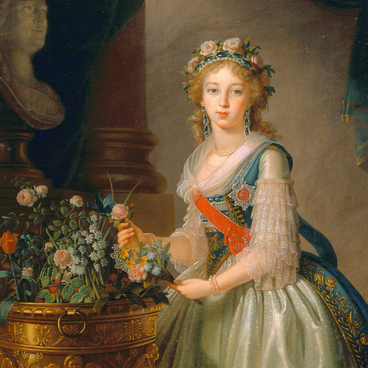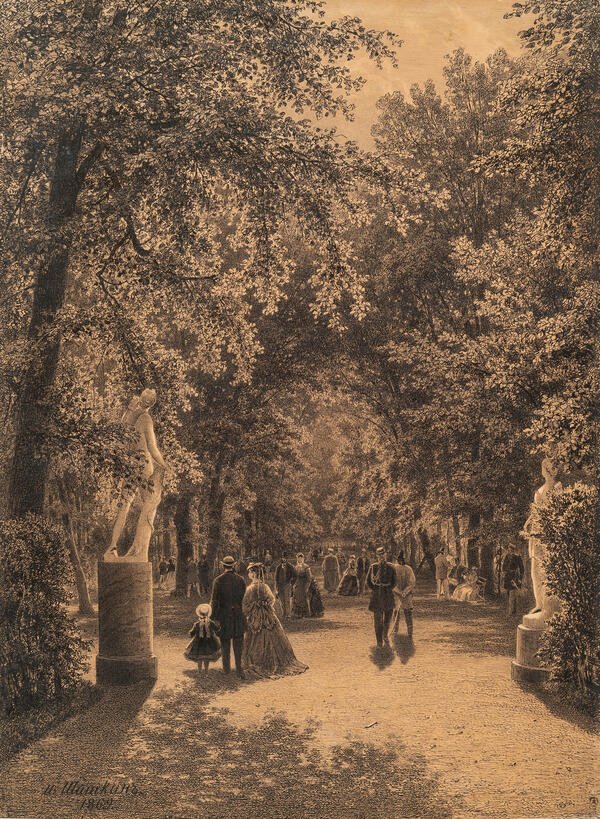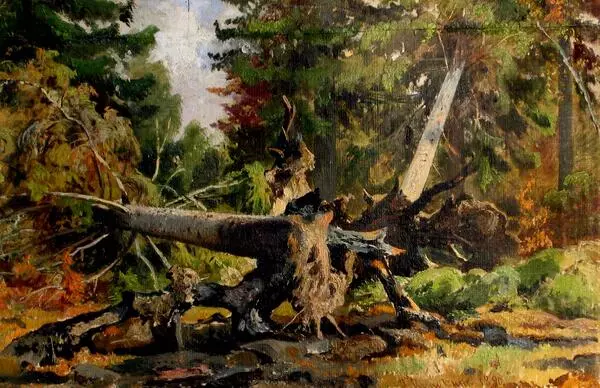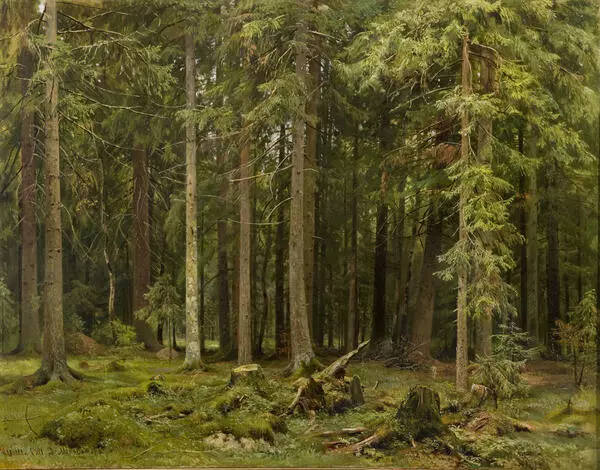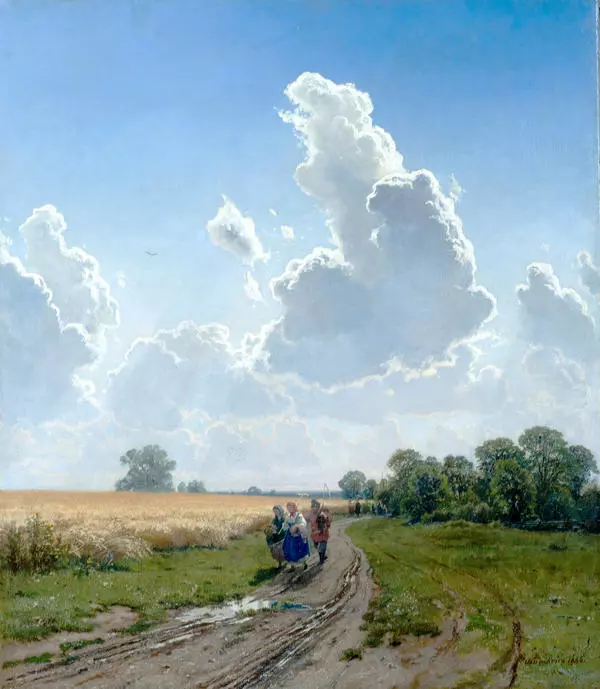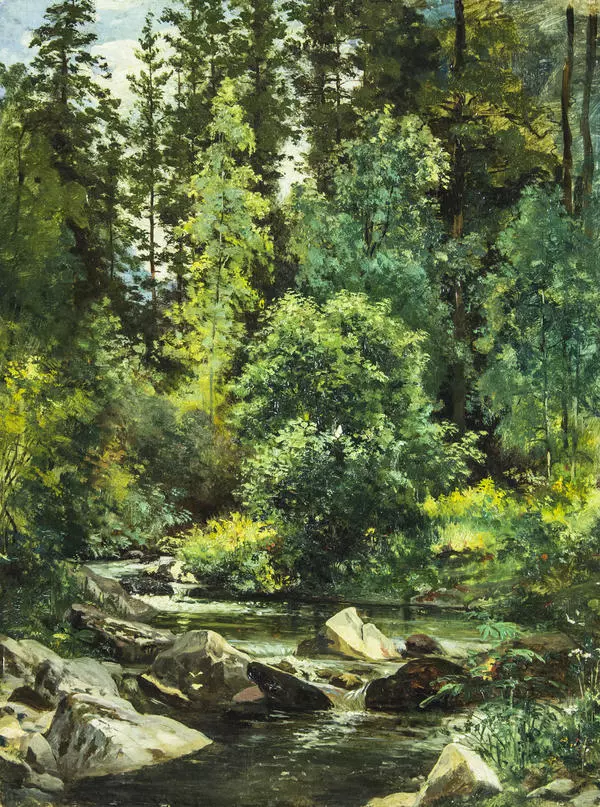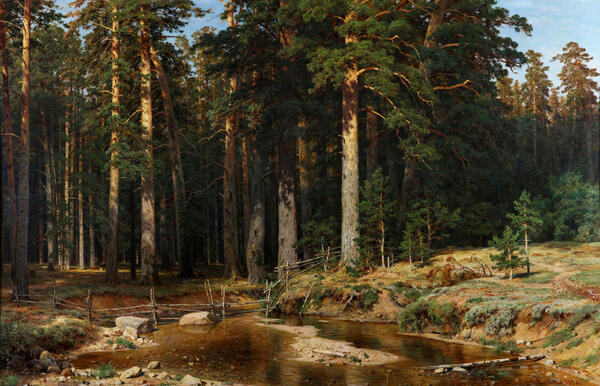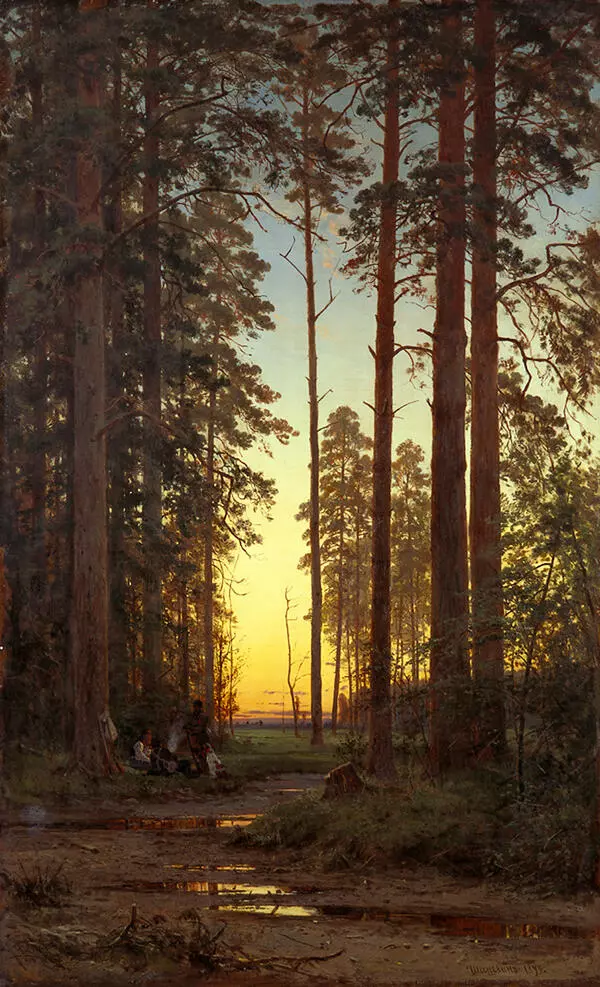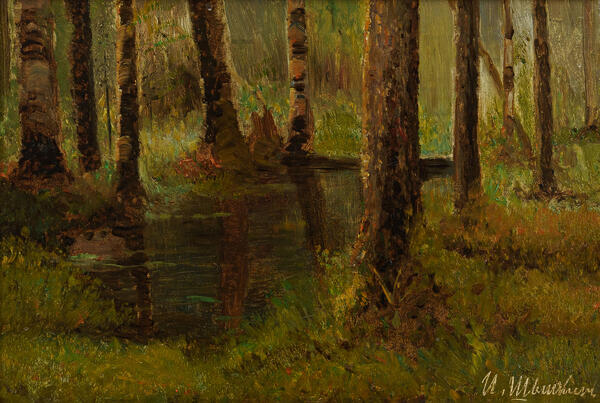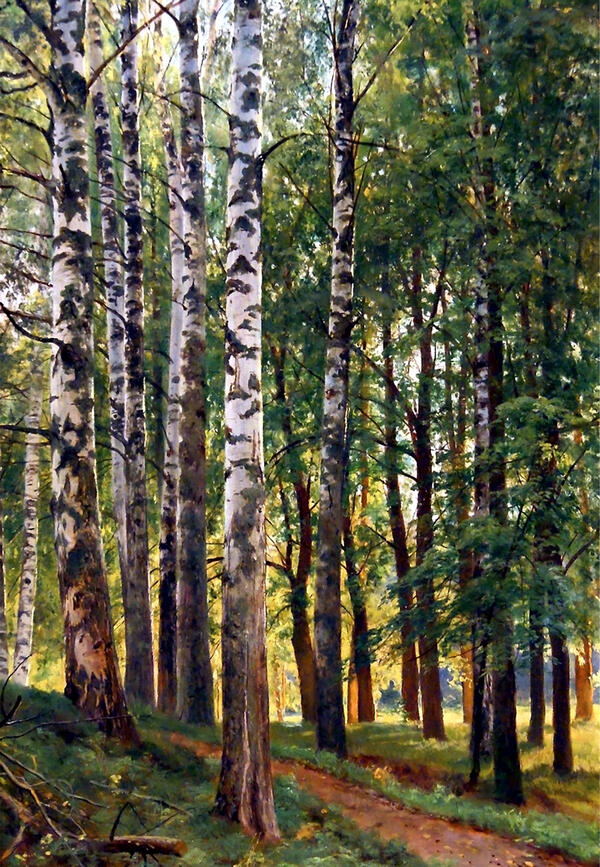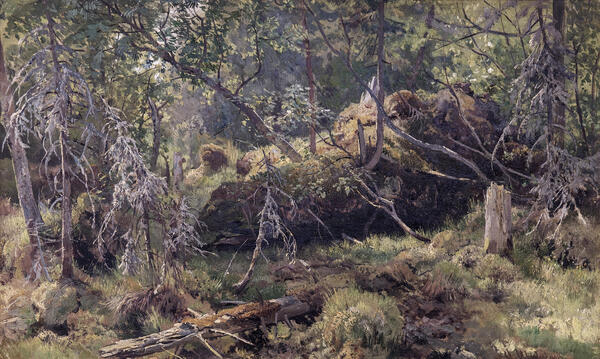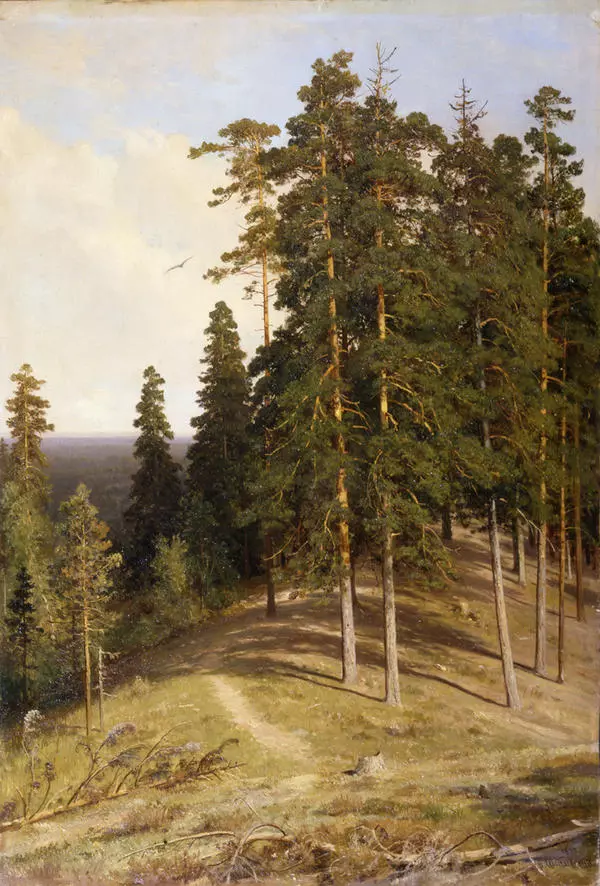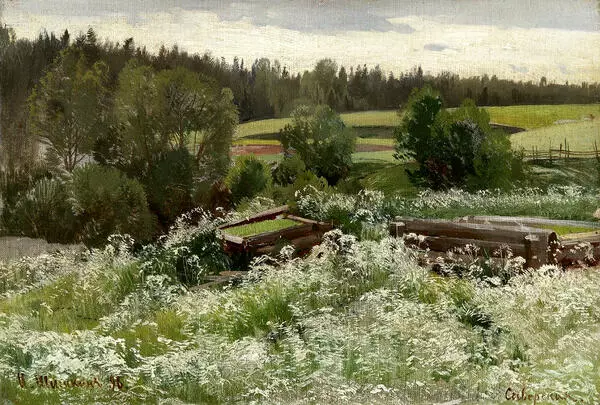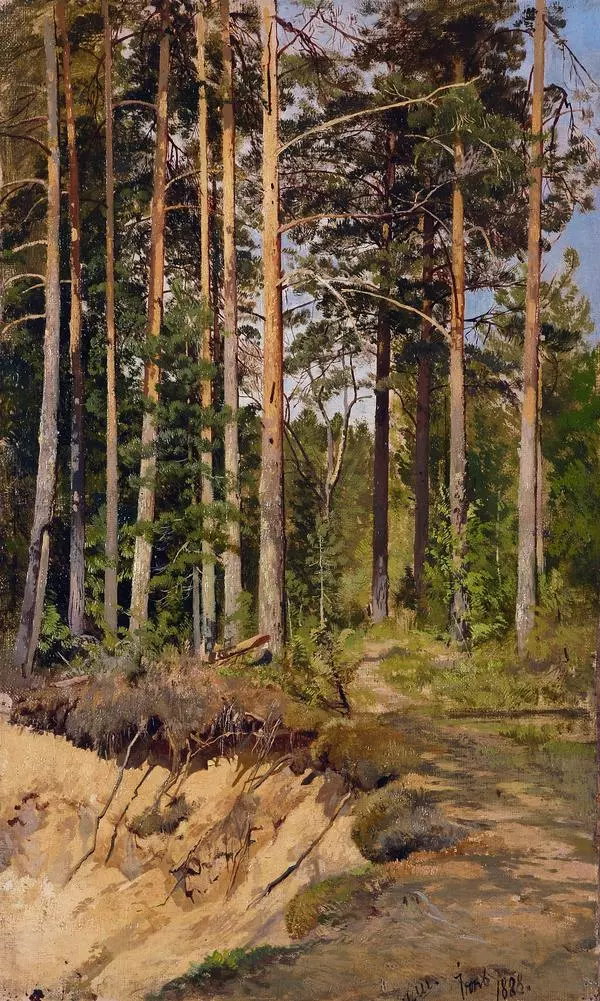By the middle of the 19th century, critical realism had become the main pictorial genre. Classicism with its strict drawing rules and obligatory use of themes from ancient mythology was replaced by a realistic reproduction of the world’s beauty. Ivan Shishkin, together with Aleksey Savrasov, Arkhip Kuindzhi, Vasily Polenov and other artists, managed to show the beauty and lyricism of Russian landscapes in a new way, and made contemporaries take a different look at their native nature and rural landscapes.
The genre reached its peak in the middle of the 19th century. The image of nature, as the face of a man, became a reflection of life, feelings and thoughts of society. In their landscapes, artists conveyed their own thoughts on the fate of their homeland and deep love for their people.
Ivan Shishkin was born in a family of a merchant in small town Yelabuga which is located on the banks of the Kama River. From 1852 to 1856, he attended classes of Apollon Mokritsky at the Moscow School of Painting, Sculpture and Architecture, and then he studied at the Imperial Academy of Arts under Socrates Vorobyov.
Shishkin graduated from the Academy with a gold medal for his landscape View of Valaam Island and received the opportunity to continue his studies abroad. In 1862-1865, he worked in Switzerland and Germany. The artist was supposed to spend six years abroad. However, he returned to Russia earlier since he did not see any benefit to Russian landscape painter in studying someone else’s nature. From that moment on, Ivan Shishkin completely focused on Russian landscapes.
In his landscape The Sun in the Forest, Ivan Shishkin used two traditional motifs for his work – strong and vigorous pine trees and a road stretching off into the distance. The plot is painted from nature.
The genre reached its peak in the middle of the 19th century. The image of nature, as the face of a man, became a reflection of life, feelings and thoughts of society. In their landscapes, artists conveyed their own thoughts on the fate of their homeland and deep love for their people.
Ivan Shishkin was born in a family of a merchant in small town Yelabuga which is located on the banks of the Kama River. From 1852 to 1856, he attended classes of Apollon Mokritsky at the Moscow School of Painting, Sculpture and Architecture, and then he studied at the Imperial Academy of Arts under Socrates Vorobyov.
Shishkin graduated from the Academy with a gold medal for his landscape View of Valaam Island and received the opportunity to continue his studies abroad. In 1862-1865, he worked in Switzerland and Germany. The artist was supposed to spend six years abroad. However, he returned to Russia earlier since he did not see any benefit to Russian landscape painter in studying someone else’s nature. From that moment on, Ivan Shishkin completely focused on Russian landscapes.
In his landscape The Sun in the Forest, Ivan Shishkin used two traditional motifs for his work – strong and vigorous pine trees and a road stretching off into the distance. The plot is painted from nature.
Using artistic tools, with wide strokes, Shishkin created a special rhythm for his forest: sunlight is penetrating the trees ‘crowns and is reflected on the pines’ trunks, whereas the road passing through the composition emphasizes the depth of the forest.
The landscape is made in warm colours. Not by accident was chosen the time of the day - noon, as a symbol of Russia, full of dormant internal forces. Art critic Vladimir Stasov called Shishkin’s paintings landscapes for the legendary heroes.
In 1870, Ivan Shishkin joined the Society of Itinerant Exhibitions (Peredvizhniki in Russian). In 1873, the artist received the title of a professor, and in 1894-1895 he became the head of the landscape workshop of the Academy of Arts.



